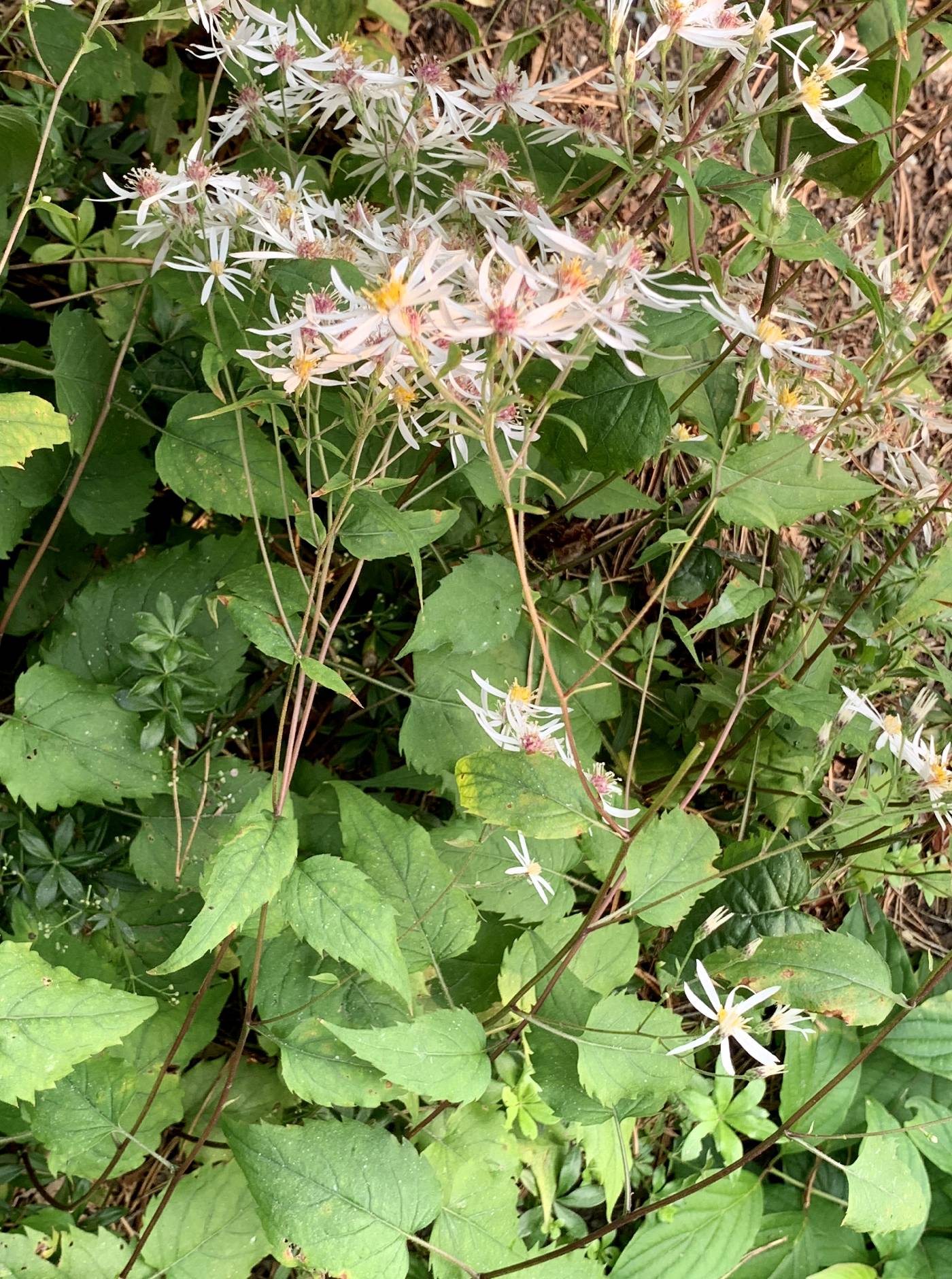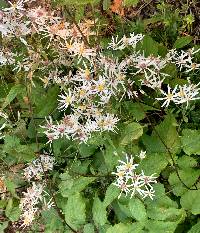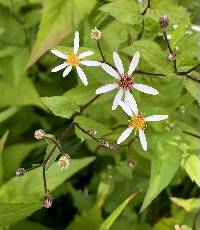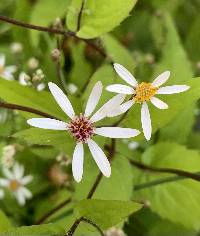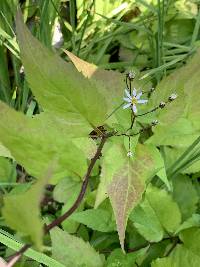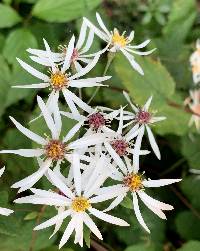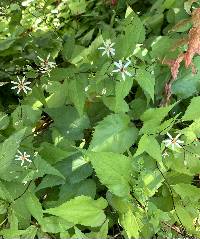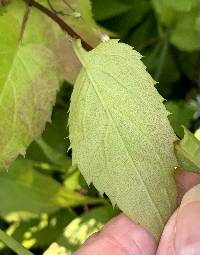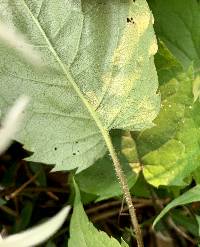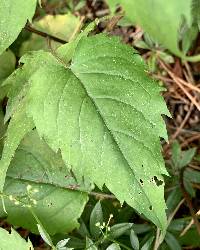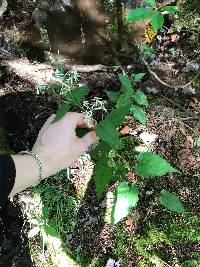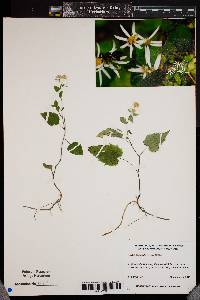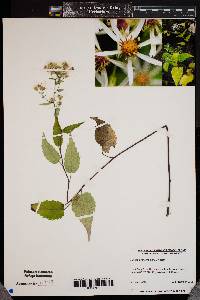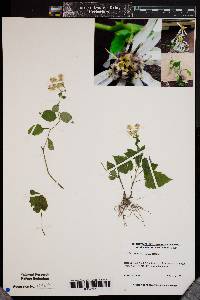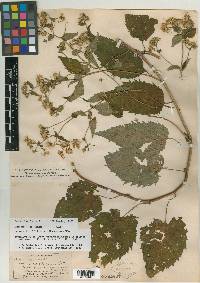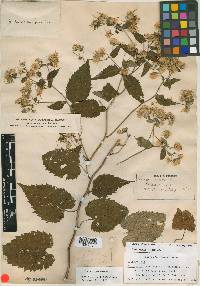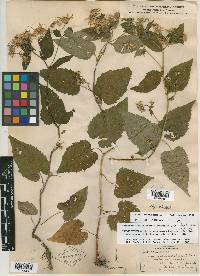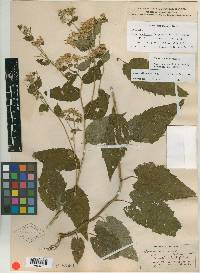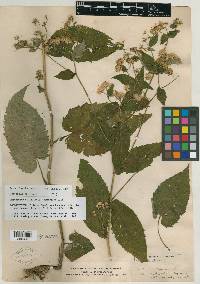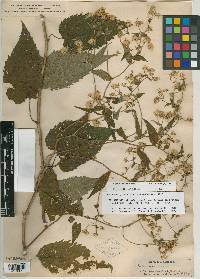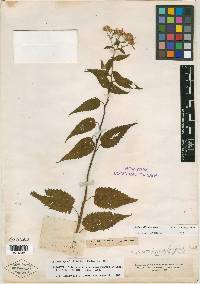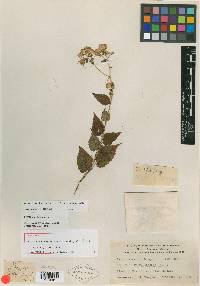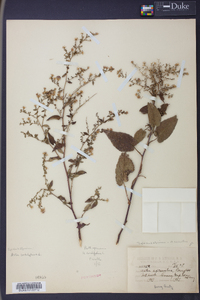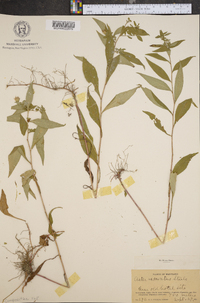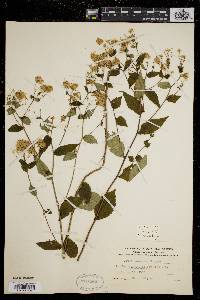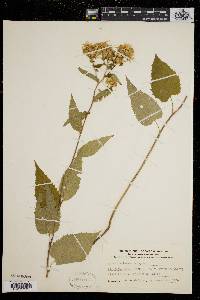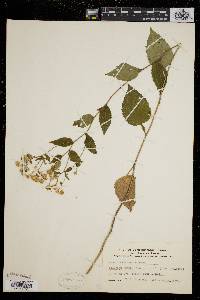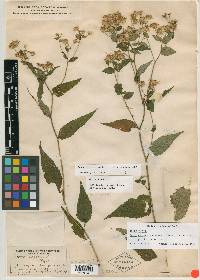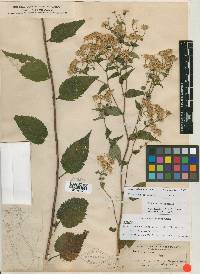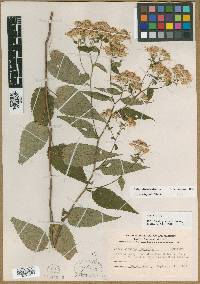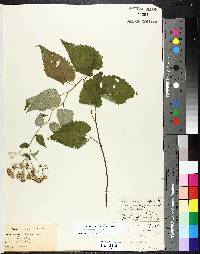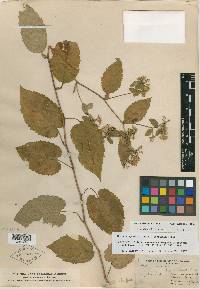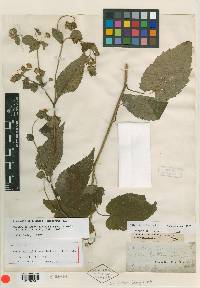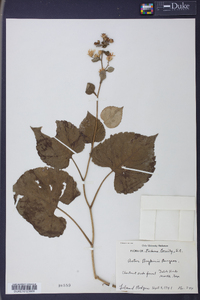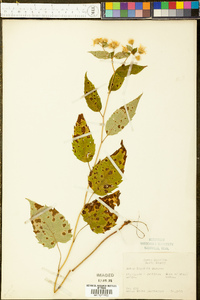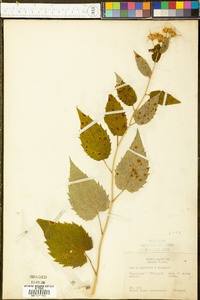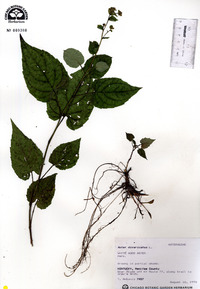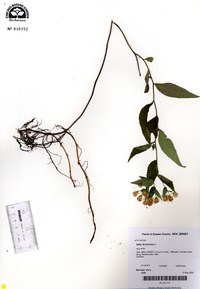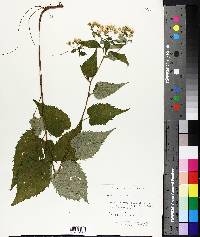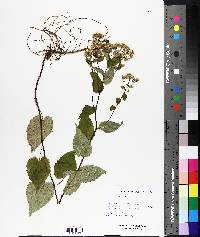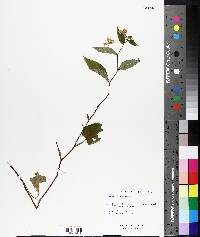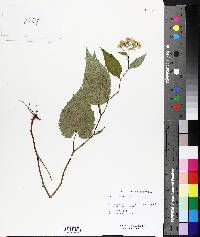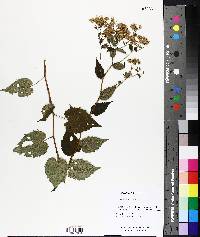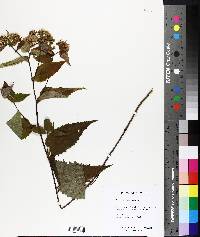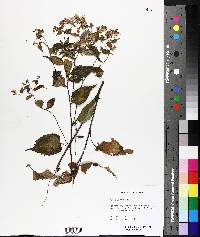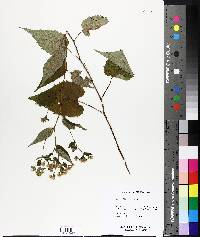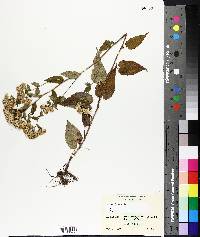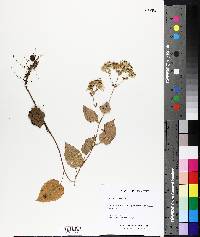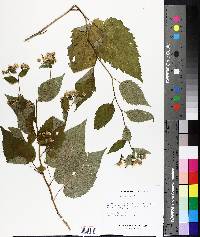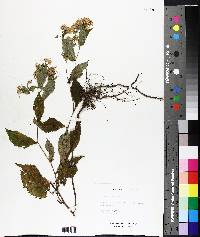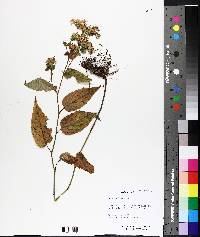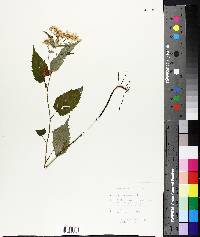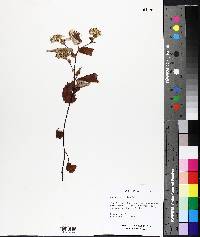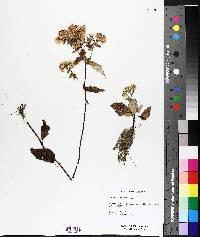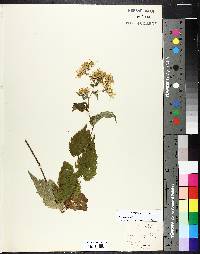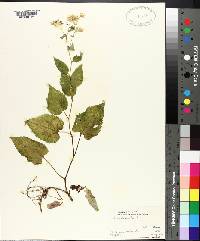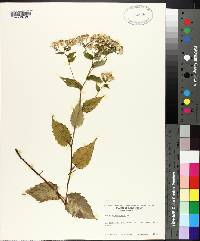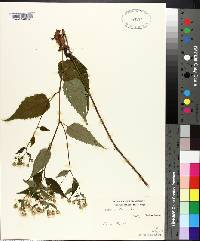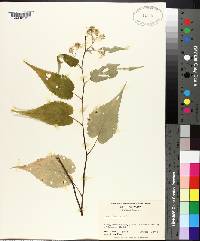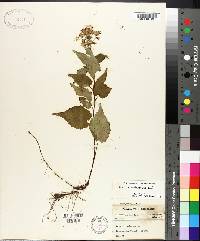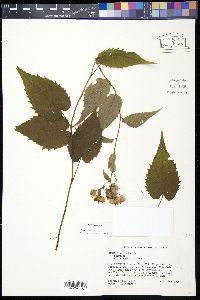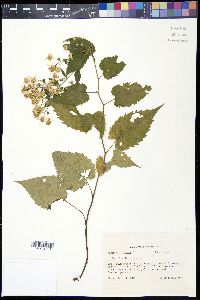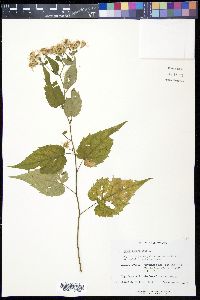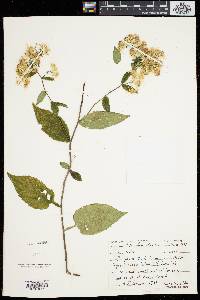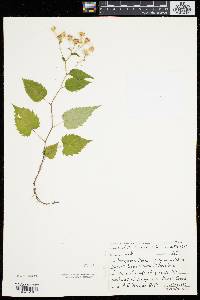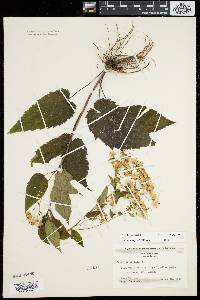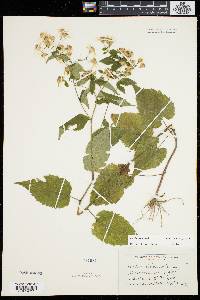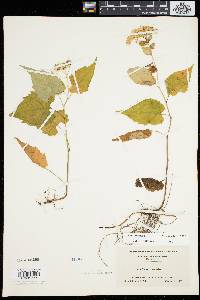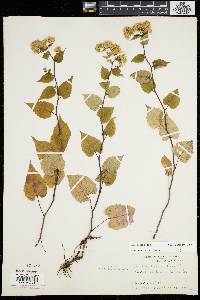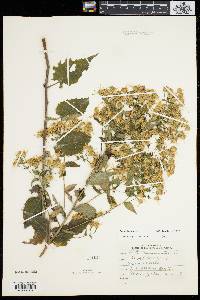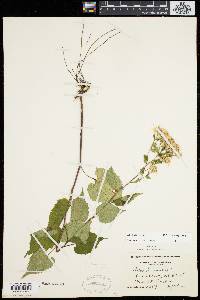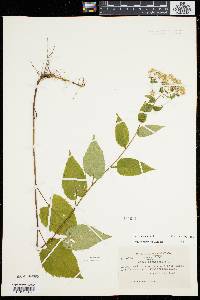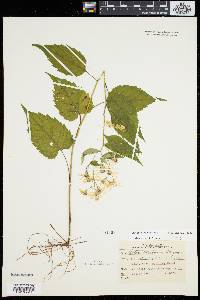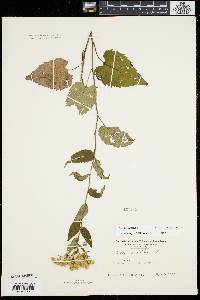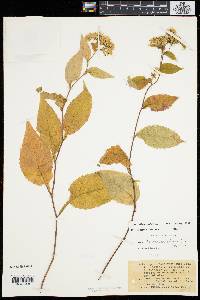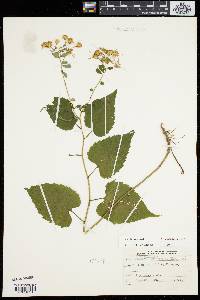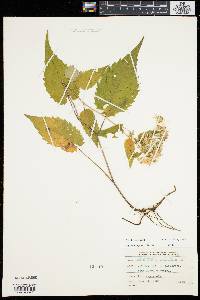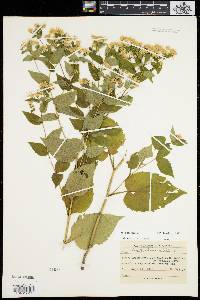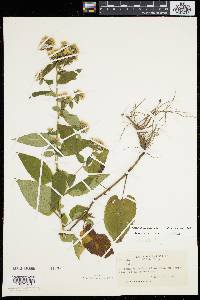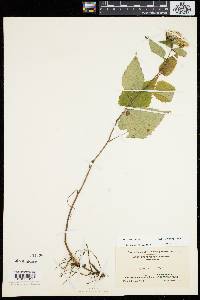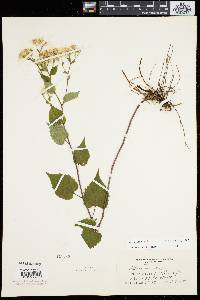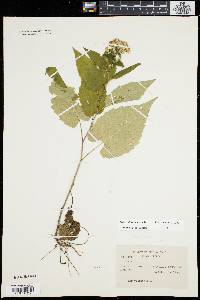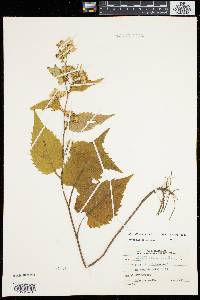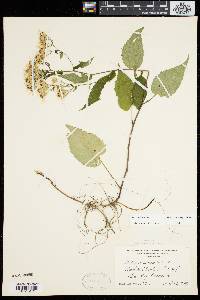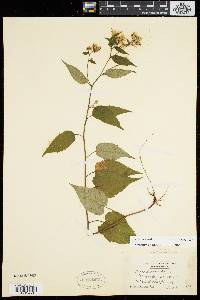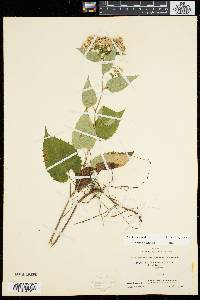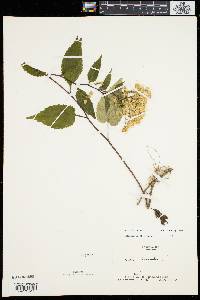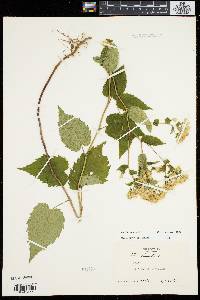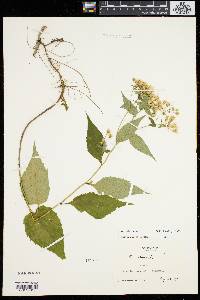Eurybia divaricata
|
|
|
|
Family: Asteraceae
White Wood-Aster
[Aster boykinii Burgess, moreAster carmesinus Burgess, Aster castaneus Burgess, Aster claytonii E.S.Burgess in Britton & A.Br., Aster claytonii var. crispicans , Aster corymbosus var. alatus W. P. C. Barton, Aster divaricatus (Nutt.) Torr. & A. Gray, non L., Aster divaricatus var. divaricatus , Aster excavatus Burgess, Aster flexilis Burgess, Aster stilettiformis Burgess, Aster tenebrosus Burgess, Chrysopsis divaricata (Nutt.) Elliott, Eurybia corymbosa (Ait.) Cass.] |
Plants 28-90(-120) cm, in ± dense clones (lacking sterile rosettes); rhizomes branched, elongate, becoming woody. Stems 1, erect, simple, flexuous, glabrate to sparsely puberulent proximally, densely puberulent distally. Leaves basal and cauline, thin , margins sharply serrate, teeth (6-15 per side) mucronulate, ciliate, apices acuminate, abaxial faces sparsely strigose or villous, particularly villous along veins, adaxial glabrescent to sparsely strigose, veins sparsely stipitate-glandular; basal and proximal withering by flowering, petiolate (petioles 20-70 mm), blades ovate, 19-65 × 17-60 mm, basal smaller than proximal, bases cordate (sinuses narrow, curved); cauline petiolate, petioles often ± winged (15-70 mm), blades ovate, 20-200 × 10-100 mm, bases cordate to rounded; distal (arrays) usually sessile, sometimes subpetiolate, blades ovate to lanceolate, 5-20 × 1-8 mm, bases rounded. Heads 4-50(-100+) in ± flat-topped corymbiform arrays. Peduncles to 1.5 cm, densely hairy, eglandular; bracts 0(-2). Involucres cylindro-campanulate, 4.2-6 mm, much shorter than pappi. Phyllaries 25-30 in 4-5 series, inner purplish distally, oblong (outer) to lanceolate or linear-lanceolate (inner), strongly unequal, bases indurate, green zones in distal 1 / 2 (outer) to 1 / 3 or along distal midveins (inner), margins narrowly scarious, densely fimbriate-ciliate, apices rounded to acute, faces sparsely hairy, sometimes sparsely stipitate-glandular; outer 0.7-1.5 mm wide, lengths seldom more than 2.5 times widths. Ray florets 5-10(-12); corollas white, 6-12 × 1.5-2.2 mm. Disc florets 12-19(-25); corollas yellow, 4.1-4.8(-5.5) mm, abruptly ampliate, tubes (2.3-2.6 mm) longer than campanulate throats (0.9-1.2 mm), lobes reflexed, lanceolate, 0.7-1.4 mm. Cypselae brown, cylindro-obovoid, slightly compressed, 2.6-3.8 mm, ribs 7-10 (tan to stramineous), faces sparsely strigillose; pappi of reddish to cream-colored (fine, barbellulate, sometimes apically ± clavate) bristles 3.7-5 mm, equaling or longer than disc corollas. 2n = 18. Flowering late summer-fall. Dry to mesic, eastern deciduous and mixed deciduous woods, edges and clearings, roadsides; 0-1200(-1700) m; Ont., Que.; Ala., Conn., Del., D.C., Ga., Ky., Maine, Md., Mass., Mich., N.H., N.J., N.Y., N.C., Ohio, Pa., R.I., S.C., Tenn., Vt., Va., W.Va.; introduced in Europe (Netherlands). Eurybia divaricata is a mainly Appalachian element of the eastern North American deciduous forest. It is often confused with Eurybia chlorolepis (see W. F. Lamboy 1992 for distinction between the two species), E. schreberi, or Symphyotrichum cordifolium. Lamboy provided a map of the species.
Rhizomatous and colonial, 2-10 dm, usually without tufts of radical lvs; stem puberulent at least in the infl, not glandular; lvs rather thin, sharply serrate with usually mucronate teeth, glabrous or with some long, mostly appressed hairs, especially along the main veins beneath; lower lvs ovate (often narrowly so), with cordate base, conspicuously acuminate, 4-20 נ2-10 cm, petiolate, the lowest often smaller than those above and commonly deciduous, the middle and upper ones progressively less cordate, less petiolate, and ±reduced; infl corymbiform, occasionally becoming elongate, its bracts few and often broad; invol 5-10 mm, its bracts firm, well imbricate, rounded to acute, very shortly green-tipped, otherwise mostly whitish, the outer 0.7-1.5 mm wide (or a little wider in var. chlorolepis) and seldom more than 2.5 times as long; rays 5-16(-20), white, or in var. chlorolepis sometimes lilac-tinged; 2n=18, 36. Woods; n. N.H. and sw. Que. (just n. of Lake Champlain), w. to the Niagara peninsula of s. Ont., s. to D.C. and s. O., and in the mt. region to n. Ga. and e. Ala. (A. carmesinus; A. castaneus; A. excavatus; A. stilletiformis; A. tenebrosus) The widespread var. divaricatus, diploid, with relatively small heads, the invol 5-8 mm, the rays 5-10(-12), 5-15 mm, gives way at upper elev. in the Blue Ridge of sw. Va., N.C., Tenn., and n. Ga. to the var. chlorolepis (Burgess) Ahles, tetraploid, with relatively large heads, the invol 7-10 mm, its bracts avg broader, and with not so pale chartaceous part, the inner ones often purplish distally, the rays (10-)12-16(-20), 10-20 mm. (A. chlorolepis) Gleason, Henry A. & Cronquist, Arthur J. 1991. Manual of vascular plants of northeastern United States and adjacent Canada. lxxv + 910 pp. ©The New York Botanical Garden. All rights reserved. Used by permission. |
|
|
|

